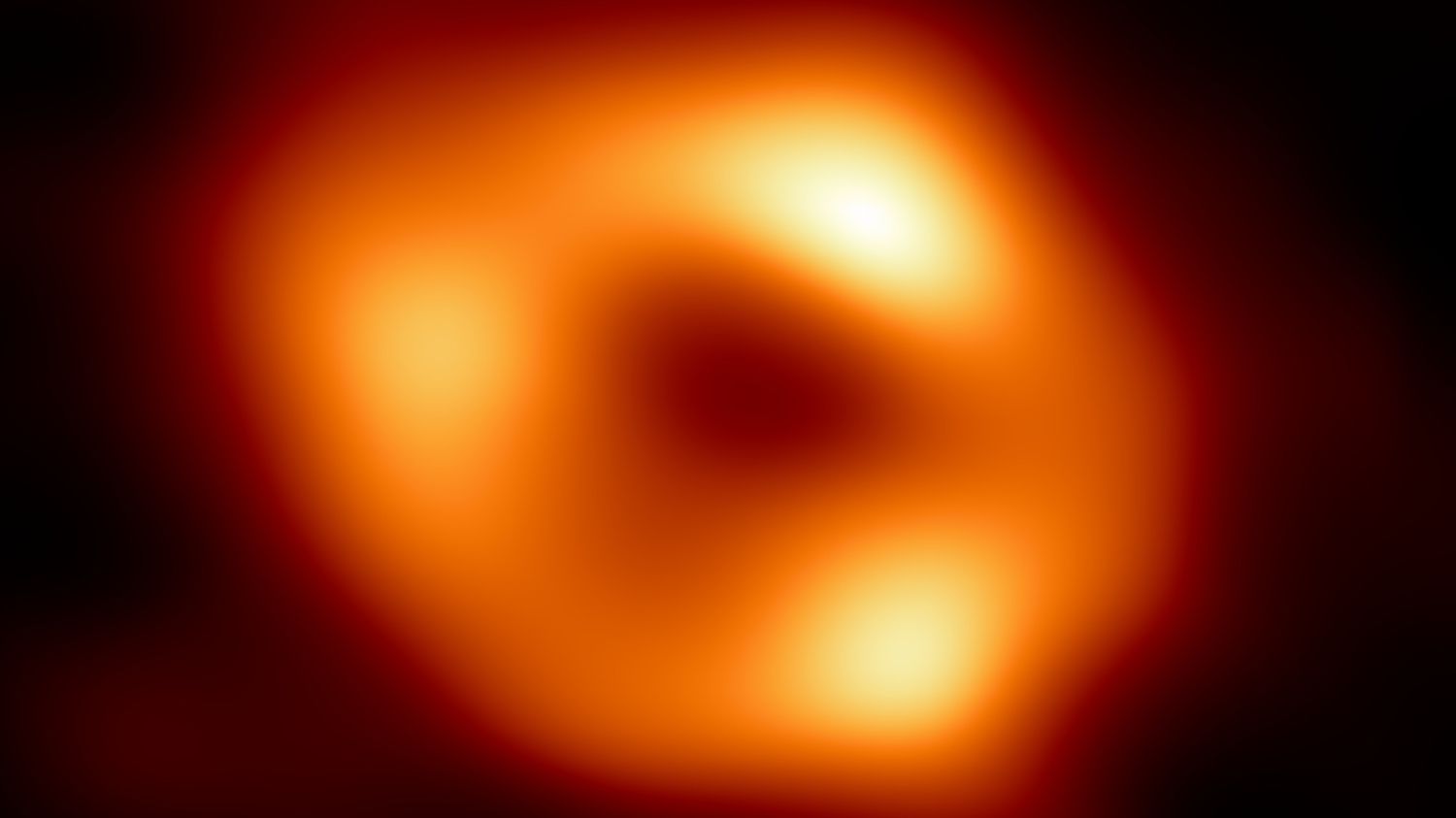His name is Sagittarius A* (or Sgr A*). It’s the supermassive black hole at the center of the Milky Way, and it now has a face. Three years after the exploit of the first image of a black hole, the team of the Event Horizon Telescope unveiled, Thursday, May 12, the first image of the black hole of our galaxy.
As a reminder, a black hole is a celestial object that has an extremely large mass in a very small volume. Neither matter nor light can escape it. Franceinfo explains why this publication is important for the history of astrophysics.
Because it’s a first (highly symbolic)
This image had been expected for years, decades. Sagittarius A*, 4 million solar masses, is the closest black hole to Earth, 27,000 light-years away. Detected for the first time in 1933, it had never been observed before when scientists had detected the presence of a particular object at the center of our galaxy. It is now done, as shown in this video from the European Southern Observatory (ESO), which allows travel from terrestrial radio telescopes to Sgr A*.
“It is symbolic, the center of our cradle”estimates with franceinfo Eric Lagadec, astrophysicist at the Observatory of the Côte d’Azur. “We have two cradles: the solar system and the Milky Way”, insists the president of the French Society of Astronomy and Astrophysics. Marie-Anne Bizouard, CNRS researcher at the Artemis laboratory, shares the same sentiment, stressing that “all astronomy is a story of images”.
“It’s always moving this kind of announcement. But here, it’s special, it’s an image of our black hole.”
Marie-Anne Bizouard, CNRS researcherat franceinfo
Because it’s a technical feat
Getting an image of the M87 black hole, revealed in 2019, was prodigious. But for this object which is 50 million light-years from Earth and which is 6 billion solar masses, the difficulties were less important than for Sagittarius A*, closer to us but much less massive, like the illustrates this video.
The two black holes Sgr A* and M87µ have the same size on the sky, because M87 is much further away. Want to get an idea of the dimensions? pic.twitter.com/KfwHuNPVRl
— Eric Lagadec (@EricLagadec) May 12, 2022
Producing an image of our black hole turns out to be a masterful achievement: it’s like observing a donut on the surface of the Moon from Earth, according to ESO astrophysicists. To put it another way, as they explained with a mischievous nod to the German city of Munich, where the press conference was held: the feat is like watching, from New York, someone drinking a beer on a terrace in the Bavarian city, seeing not only the person putting the glass to his mouth, but also distinguishing the bubbles inside it.
The other difficulty lies in the rotation speed of stars and matter around our black hole, notes Eric Lagadec: “As Sagittarius A* is smaller than M87, matter spins faster around it, and this creates variations.”
“If you try to take a picture of something that moves when it’s a bit dark, you’ll get a blurry image. It’s very difficult to get a clear picture of something varied.”
Eric Lagadec, President of the French Society of Astronomy and Astrophysicsat franceinfo
This historic image is the result of an international collaboration called Event Horizon Telescope (EHT). It brings together a dozen radio telescopes and observatories spread around the globe, from Europe to the South Pole, via Chile and Hawaii. “More than 300 researchers from all over the world have worked on this project”notes Eric Lagadec, while Marie-Anne Bizouard salutes the important result “long-term effort”.
Because the observations will accumulate and refine
The observation may seem trivial but we no longer have a single black hole image but two. It is now possible to make a comparison, to observe similarities and differences. Overall, for M87 and Sagittarius A*, “the two have the same shape, we can start to think that it is perhaps something rather standard”comments Eric Lagadec.

Above all, astrophysicists declared at a press conference that other black holes were being observed, without further details. “On each black hole that is tracked, there is going to be an improvement in knowledge, remark Marie-Anne Bizouard. For each of the black holes, we can accumulate details, statistics, but we can also perhaps discover new unique and specific things. In any event, the Event Horizon Telescope team made this promise: “The best is yet to come”.
